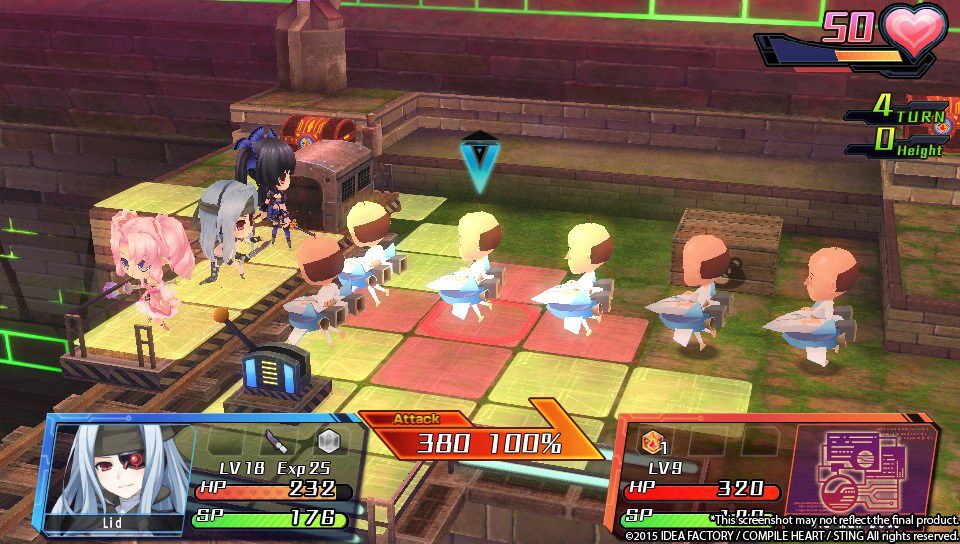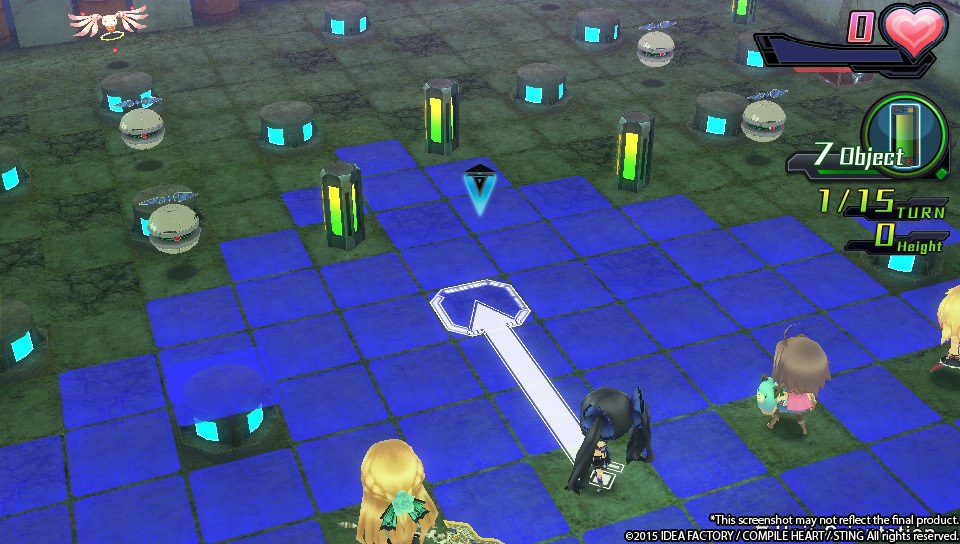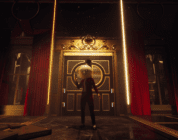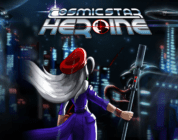If you’ve been aching for a cutesy JRPG fix, Nep-Nep and the lovable goddesses of Gamindustri has your back, and this time they’re serving under Noire in her spinoff turn-based strategy RPG – Hyperdevotion Noire Goddess Black Heart!
Hyperdevotion Noire is set in the alternative universe of Gamarket where – exactly like the previous games in the series, the Console Wars are fought between the four CPU Goddesses to increase the control of their domains. However, unlike the previous mainline Neptunia games, this spinoff follows the adventures of Noire as she attempts to unite Gamarket under the banner of Lastation, joined by a varied cast of both old and new characters.
In Hyperdevotion Noire, the player takes the role of an unnamed self-insert character that is picked up by Noire after she is tricked by Arfoire into cutting off access to all the CPUs’ shares – and thus their Goddess powers. Your job is to manage Noire and her party as they travel the world to gain both power and allies along the way, in order to ultimately challenge Arfoire to defeat her and her dastardly plans once again.
As is typical of Neptunia series games, the lighthearted story of Hyperdevotion Noire is mostly told through visual novel style cutscenes interspersed between main missions, and is filled to the absolute brim with non-stop gaming industry references and trivia. While many of the characters from the mainline Neptunia games make appearances, a variety of new characters have also been added, with Noire’s party growing with every successive story mission. All of these new characters are themselves comedic caricatures of popular series such as Street Fighter, Dragon Quest, Final Fantasy, and Metal Gear Solid, and are well developed with many character-specific cutscenes.
Aesthetically, Idea Factory has completely nailed the art direction in Hyperdevotion Noire. While the great art style from the mainline series has been kept intact during cutscenes, new Chibi-style 3D models are used in battle. These models are all individually designed with character-specific movement, battle, and idle animations that look superb on the Vita screen.
The battle system was probably the most surprising part of the game to me, as Idea Factory have somehow seamlessly ported the Neptunia battle system into a turn based strategy format. If you’ve played any of the Neptunia Re;Birth series games you’ll be able to pick Hyperdevotion up and immediately understand the ins and outs of the combat mechanics. Combat is performed on a tile-based grid on which you may send a number of party members to duke it out with gaming themed enemies through turn-based strategy on mission specific maps. The SP-based skill system from the mainline series remains intact in Hyperdevotion Noire, and even brings over many of the skills with updated animations. A new Lily System mechanic has been added, that allows characters to accumulate Lily Points (LP) in addition to reduced skill costs when casting skills while flanked by allies. In addition to the benefit of a cute cheek kiss animation that plays, accruing 30 LP allows the four Goddesses to activate HDD Mode, while 100 LP allows all characters to unleash an ultimate skill. This LP system adds an additional depth to the turn-based gameplay by introducing the risk-reward scenario of whether or not to group up your units for the Lily Boost, and at the same time making it easier for enemies with Area of Effect skills to wreak havoc among them. In addition to the combat systems, Item and Disk development has also made its way into the title, and gives you the ability to craft equipment, consumables, and many other items to improve your party.
However, while the heavily menu-centric gameplay style of the Neptunia series fits well with the turn based strategy genre, it fails to capture the interest for as long as it should. Hyperdevotion Noire is by no means a short game, and its mechanics only serve to extend that timeframe. Combat is heavily focused around the positioning of your units versus that of the enemy. This results in battles that drag out way longer than they should due to the necessity of constantly using turns doing nothing but rearranging party positions. Environmental elements such as elevation, traps, and interactable elements like moving platforms allow the maps themselves to stay fresh, but a limited variety in enemy types hurts the replayability experience. While some RPGs can get away with low replayability, Hyperdevotion Noire requires a non-insignificant degree of grinding in order to keep up with difficulty spikes throughout the game if you don’t want to change your game difficulty settings. In addition, the exploration element of Neptunia titles has been completely removed and the player is only given the option of jumping between the entirely menu-based hub area and the mission maps.
Overall, Hyperdevotion Noire Goddess Black Heart was an enjoyable experience that retained the lighthearted comedic mood of the Neptunia mainline titles, but ultimately fails to address any of the flaws of the previous titles in the series. However, it is an interesting foray into the relatively desolate SRPG genre and is strong enough to stand on its own legs regardless of prior knowledge or experience in the longstanding series.







